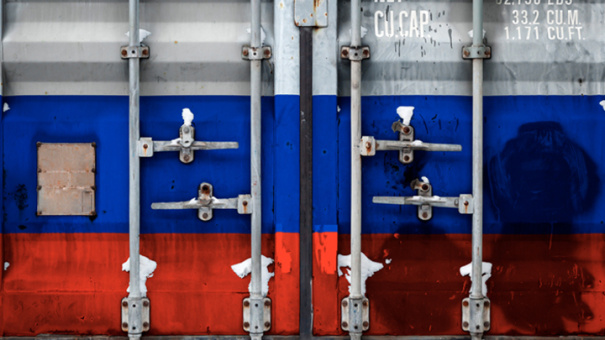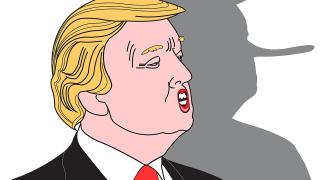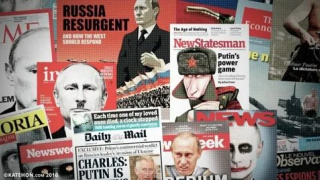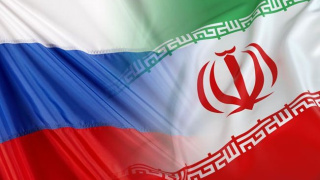How has Russian exports changed in 5 years of economic war?
Statistics prove that Russia has not just recovered from the blow struck on it, but also gained new opportunities.
Russian exports overcame the effects of Western sanctions, changed its structure and became more resistant to external influences than before 2014. This is evidenced by data presented by practical economists at the Go Global Summit | Globalization of brands in a digitalized economy. ”
At the end of 2013, before the start of the sanctioned opposition, Russian exports amounted to 2.74% of the world. The volume of deliveries abroad of Russian goods was estimated at $ 526.4 billion, services - at 70.12 billion.
The trade restrictions imposed by the United States, the European Union and their allies have expectedly led to a decline in the share of Russian supplies on the international market. The situation was aggravated by a sharp drop in prices for energy resources, primarily oil. Russian manufacturers began to experience problems due to the collapse of the ruble exchange rate and the rise in prices of imported components, consumables and equipment caused by it.
As a result, by 2016, Russian exports dropped to 1.79% of the world total. The commodity component suffered most of all: its volume dropped to 287.6 billion. The service sector slipped less, decreasing to 50.7 billion, but even here the losses looked very significant.
However, contrary to Western expectations, 2016 was not only the worst for domestic exports, but also became the starting point for the restoration of Russian potential. As a result, by the end of 2018, Russian exports amounted to 2.44% of world exports. Recovery from the export of goods amounted to 86% of the 2013 level ($ 452.1 billion), and services - 92% (64.7 billion).
In fact, to date, Russia has won back the pre-crisis positions and moved into an economic counter-offensive.
The main export items throughout the sanctions five-year plan remained a relatively small group of goods:
hydrocarbons (oil and its products, gas, coal);
metals and metal;
chemical industry products.
However, contrary to popular belief, Russia sells abroad not only raw materials. In the fourth place of the export rating are machines and equipment, including vehicles; on the fifth - agricultural raw materials and agricultural products. This is followed by wood and pulp and paper products, precious metals and stones. All together gives 95% of export earnings. This is speaking exclusively of products for peaceful purposes. However, Russia is also the world's second largest arms supplier.
In 2018, Rosoboronexport sold $ 15 billion to foreign customers of special equipment and weapons and signed contracts for another $ 20 billion.
However, data on military-technical cooperation is almost never published in official documents, and therefore specialists have to be content with approximate indicators, which are occasionally voiced by sources close to the presidential administration and the government. For this reason, serious economists prefer to exclude military profits from their research. Nevertheless, the proceeds from the sale of military iron must also be borne in mind.
Adaptation and evolution
What has changed during the sanctions five-year plan?
First, the export structure. During this time, Russia has become many times more to export agricultural products. Dollar revenue in the category of food products increased from 16 billion dollars in 2013 to 25 billion in 2018, that is, one and a half times. A ruble - even more: from 0.52 trillion - to 1.56 trillion, that is, three times.
The basis of Russian food exports is cereals and fish. 75% of grain sales come from wheat. The country confidently regained the pre-revolutionary title of the breadbasket of the world. The main buyers of Russian grain are Egypt, Turkey, Iran and Saudi Arabia.
Significant success is demonstrated by metallurgists. Exports of metals in 2018 brought 115% more than in 2013: 2.8 trillion rubles to 1.3 trillion five years earlier.
However, it should be noted that the situation with Russian metallurgical exports is ambiguous. On the one hand, growth was noted in ruble revenues and was largely due to the depreciation of the Russian currency. On the other hand, metallurgy turned out to be the place where our European and American “partners” tried to hit hardest.
Since 2016, their efforts in the world began to operate 29 protective duties on Russian steel and metal products.
Nevertheless, despite the best efforts of Brussels and Washington, the export of metals still provides Russia with almost 10% of foreign exchange earnings.
The situation is similar with the export of machinery and equipment. Here, the ruble income increased from 0.9 trillion rubles in 2013 to 1.8 trillion in 2018, which actually correlates with the double depreciation of the ruble against the dollar over the years.
This trend was also characteristic of the export of wood and pulp and paper products. Throughout the sanctions five-year period, the physical volume of unprocessed wood sold abroad remained at about the same level - 19-20 million cubic meters per year. Sales of treated wood for the same period increased by one and a half times (from 12 million to 19.2 million tons), and dollar revenue increased by 28%, reaching $ 14 billion by the end of 2018. However, given the state of the Siberian and Far Eastern taiga, this growth is perhaps the most controversial achievement of recent years.
Certain losses over the past years have suffered Russian chemistry. Dollar revenue from the export of mineral fertilizers, synthetic rubber and ammonia decreased by 15% compared with 2013. However, in ruble terms, there is still a nominal growth: 1.7 trillion versus 0.98 trillion in 2013. The volume of "chemical" sales is still significant and amounts to 6% of Russian exports. At the end of last year, revenue for "chemistry" amounted to $ 27 billion.
Turn to the East
Important changes have taken place in the direction of export flows. For a long time the main foreign economic partner of Russia was the Netherlands. Of course, this is not to say that it was bad: after all, along with Germany, the kingdom is one of the EU flagships, and close trade relations with the Russian Federation turned the Netherlands into a natural lobbyist, opposing the rampant Russophobia and fever.
However, at the same time, exports, and therefore the main part of the currency earnings of the Russian Federation, were tied to the European Union and ultimately depended on whether our authorities could reach an agreement with the European elites.
Since 2017, China has become the main foreign trade partner of Moscow. Over the past five years, Russian exports to the PRC have grown from 35.6 to 56 billion dollars.
This does not mean that Russia can now ignore the European direction. The Netherlands remains the second, and Germany is the third most important foreign economic partner. The ten most important counterparties, along with Belarus, Turkey and South Korea, also include Poland and Italy. However, the fact that Russia's economic dependence on its western neighbors is declining is visible to the naked eye.
Summarizing, we can say that Russia won a five-year economic confrontation with the largest economies in the world. The difficulties that the country experienced were not so much connected with the sanctions as with the collapse in oil prices and the ruble depreciation caused by it. When the cost of black gold and other energy sources began to grow again, the volume of Russian exports began to recover. The sanctions gave Russia an incentive to develop those sectors that had not previously been prioritized, and the low exchange rate of the national currency made Russian goods very, very competitive.










